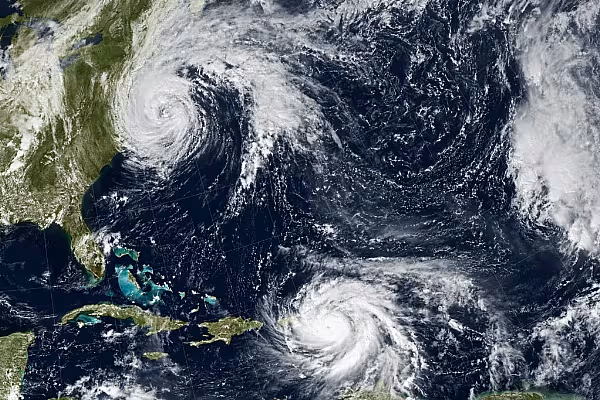After an unprecedented 2020, surely next year is going to see a return to relative normality? Not necessarily, says Nick Peksa of Cost Insights. This article first appeared in ESM Issue 6 2020.
Large areas of Europe are currently experiencing their second period of national lockdown, whilst the day to day lives of most individuals has been disrupted. Despite this, food scarcity has – thankfully – not been an issue during 2020.
However, there are a number of dark clouds gathering on the horizon that may start to affect the supply of staple food products in 2021. Supply disruption may be exacerbated by a number of national governments stockpiling raw materials, while in other regions of the world, the production of crops may be limited by inclement weather conditions.
Current Situation
Currently, the global food supply chain is fragile, being constructed from a complex web of interactions involving agricultural inputs, farmers, processing plants, shipping and retailers. Any destabilisation of these interactions can lead to significant repercussions down the line. An impressive 23% of food produced globally is traded internationally, valued at $1.5 trillion.
Up until now, the main supply issues have revolved around logistics. COVID-19 has led to travel bans, reinforced borders, port closures and restricted transport channels, resulting in a slowdown in the flow of commodities. Logistics delays have resulted in large volumes of goods perishing either at source or in their containers – this, combined with suppliers lowering their risks, has led to some perceived shortages in the marketplace, and thus a number of price hikes have occurred for specific raw materials.
Stockpiling
A number of Middle Eastern and Asian economies have taken a long-term view on their nations’ requirements and as a result have taken the unusual step of tapping into international markets in order to boost their strategic stockpiles of food.
Egypt, a leading international grain buyer, has boosted its wheat purchases by more than 50% since April. China has a five-year plan to increase the nation’s reserves of crude oil, oilseeds and other agricultural commodities. The world’s largest importer of food has recently started to replenish its sugar stockpiles and has also increased its grain purchases, in-order to feed its recovering pig herds. Other commodities will follow.
These are not the only factors that are stimulating a price rally for maize, wheat and soyabeans. China has experienced flooding; bad grain harvests have affected Turkey and Morocco, while Europe has been best described as ‘too dry, then too wet’ by the European Commission. The warm, dry summer in Europe followed by excessive rainfall in the second half of the year has hampered field work, thus delaying harvests, planting and reducing yields across the board.
Globally, additional crop problems are expected in the upcoming months, as the World Meteorological Organization (WMO) has declared a ‘La Niña’ event, heralding a colder and stormier winter across the northern hemisphere.
La Niña
La Niña is a cooling of surface ocean water along the Pacific coast of South America. This is the ‘cold’ phase of the El Niño southern oscillation, with these two events exerting a global influence on temperature, storms and rainfall. La Niña is likely to continue through the Northern Hemisphere’s winter 2020/21 (approx. 85% chance) and into spring 2021 (approx. 60% chance during February-April).
Although the true impacts will not be known for a while, history suggests some of the possible effects of La Niña may include drier than usual conditions in east Africa, Brazil and US, with wetter conditions across large parts of west Africa, south-east Asia and Australia.
Negative Effects
Brazil, a major grower of many raw materials and the world’s dominant producer of sugar cane, coffee and soybeans, is among the countries likely to experience negative effects. Severe drought could create global supply problems, and ultimately affect the yields of crops.
For example, with regard to sugar cane, São Paulo state is currently experiencing its worst drought in over a decade. Severe dryness has been seen in Mato Grosso, Mato Grosso do Sul, and Parana, all major soybean producing areas. In addition moderate to severe drought conditions are present in Minas Gerais, Espirito Santo, São Paulo, and Parana, which are major sources of arabica coffee.
Dry conditions as a result of the La Niña event are not limited to just Brazil. Many parts of the Western Hemisphere will be affected. Dry conditions in Argentina are threatening to hurt crop yields for both soy beans and wheat. Colombian coffee is also at risk. These factors have helped to further stimulate the world futures markets. Wheat, coffee, sugar and soybeans have already experienced an uplift in price.
Positive Effects
Any La Niña event also brings additional much needed precipitation to other regions, such as Australia and the west African countries of Ivory Coast and Ghana. Malaysia and Indonesia may also experience a much-needed increase in rainfall.
For example, above-average rainfall in the Ivory Coast and Ghana, responsible for 75% of world cocoa, could lead to a bumper cocoa harvest in 2020/21. Australian wheat production in 2020/21 is forecast to increase to 28.9 million tonnes (90% year-on-year increase). And increased rainfall in Indonesia and Malaysia may benefit palm oil production. Output may increase by 4% to almost 49 million tonnes.
Ending Thoughts
The world’s population is dependent on global trade for access to fresh, healthy, safe food. The intention of a number of nations to stockpile raw materials, combined with the prospective of staple food products being affected by inclement weather, may induce price inflation across many categories. The repercussions of food inflation were vividly seen during the past decade, via a series of anti-government protests and uprisings spread across much of the Arab world.
As a result of multifarious COVID-related issues, people in the developed world are also finding themselves without enough food. National governments need to take this very seriously – we have already seen the first protests occur in Poland, and there is potential this sentiment will spread across Europe as food prices bite. Stay safe.
For more information, contact nick.peksa@cost-insights.co.uk.
© 2020 European Supermarket Magazine – your source for the latest retail news. Article by Nick Peksa. Click subscribe to sign up to ESM: European Supermarket Magazine.














